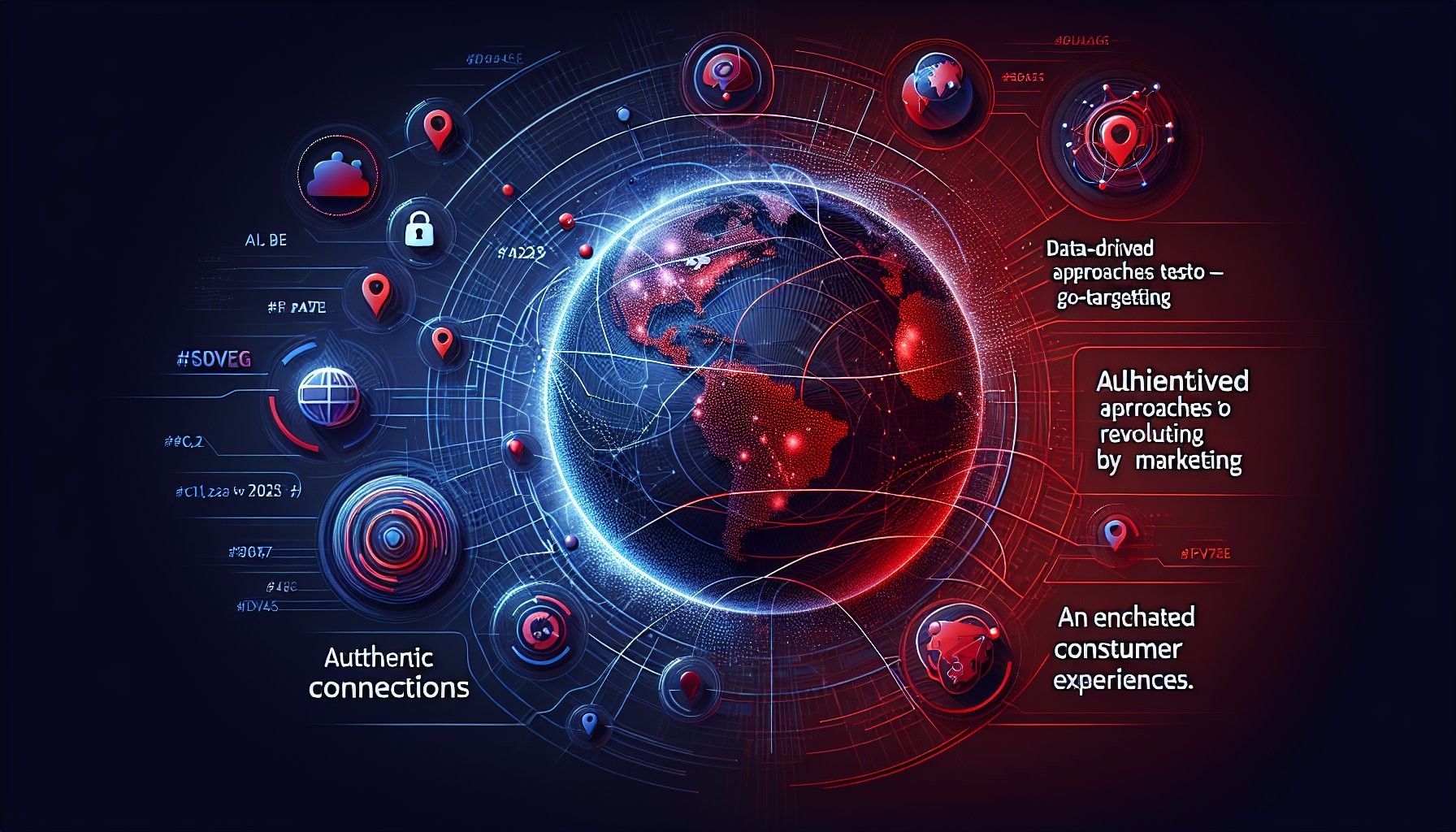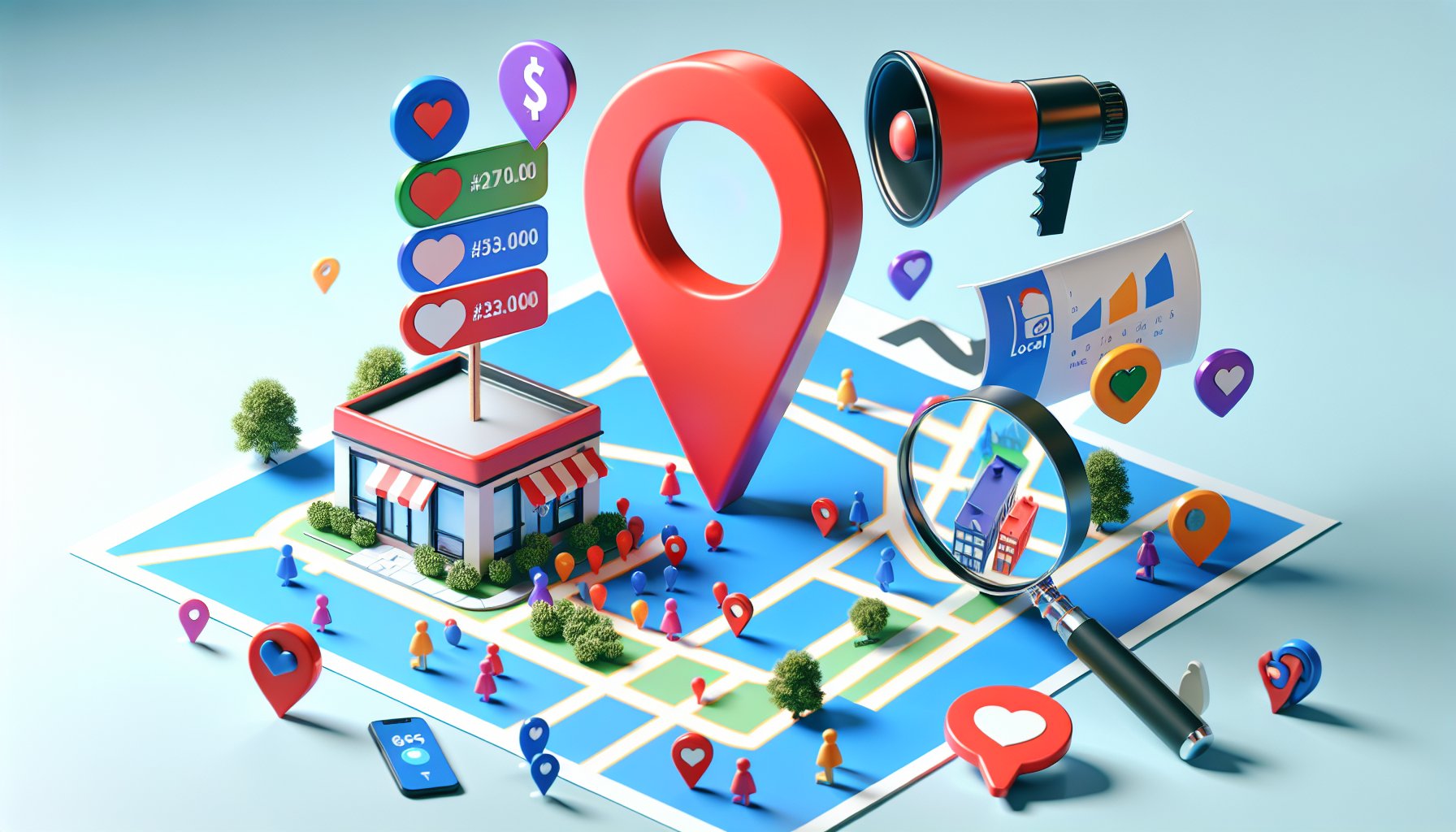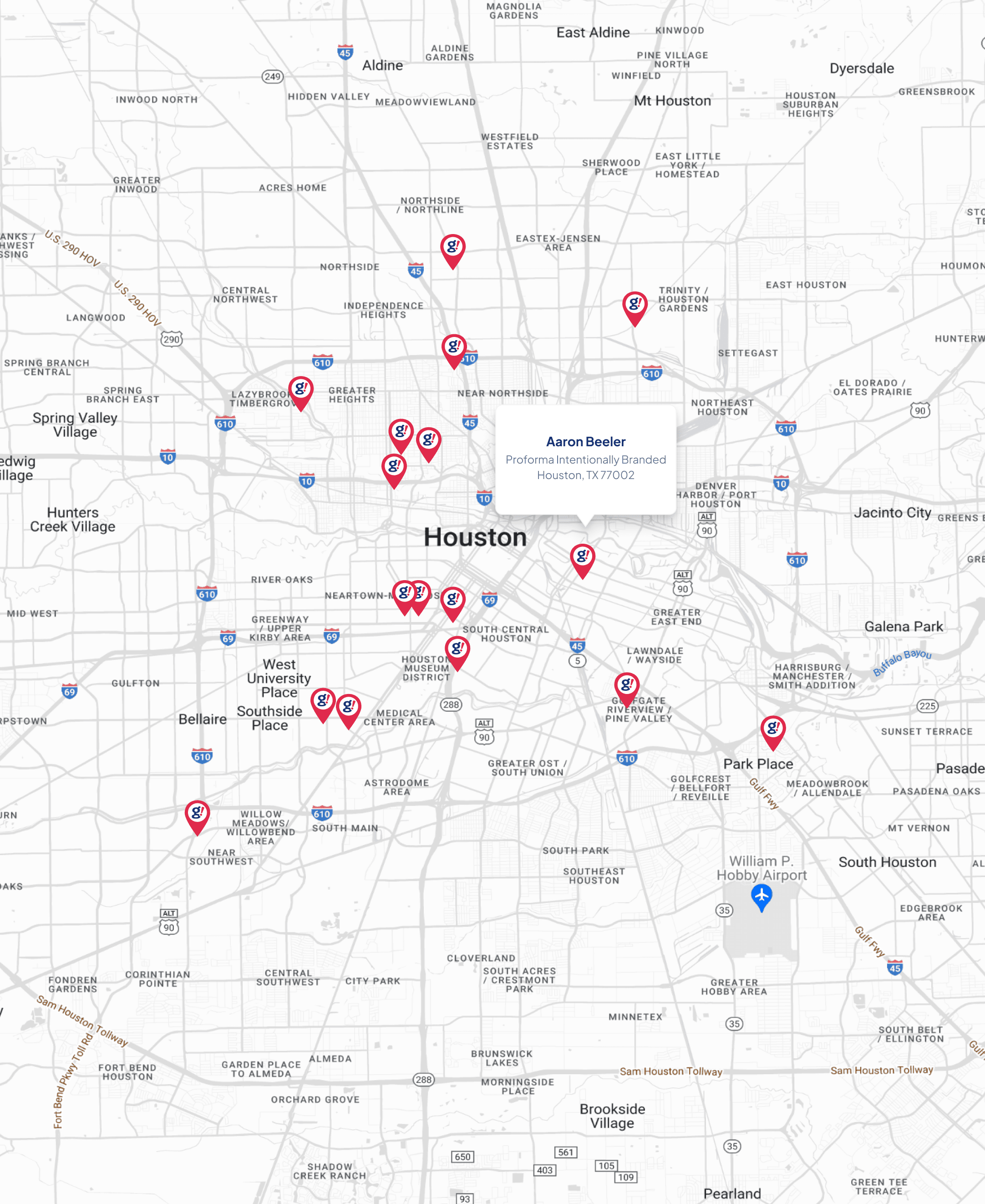Geo-Targeting Solutions
How to Utilize Geo-Targeting Solutions to Drive Foot Traffic to Your Store
Discover how to utilize geo-targeting solutions to drive foot traffic to your store. Learn strategies for personalized ads, consumer behavior insights, and effective partnerships that can transform your retail experience and increase customer visits.
Nov 26, 2025
8 min read

How to Utilize Geo-Targeting Solutions to Drive Foot Traffic to Your Store
TL;DR
Want to reel in foot traffic like a pro? Geo-targeting is your secret weapon. Imagine someone strolling past your store and suddenly ping! A personalized ad about your ongoing sale lights up their phone. Boom! You've just converted a passerby into a potential customer. By understanding consumer behavior, leveraging cutting-edge tech, and fine-tuning your message, geo-targeting can create a magnetic pull to your storefront. From enhancing local partnerships to navigating privacy, this strategy transforms the digital landscape into your personal shopper magnet. Dive in to see how!
Bring the World Closer
In today's retail game, geo-targeting has changed the way businesses interact with their customers. It’s no longer a luxury to send a personalized ad to someone in your store's vicinity; it’s a necessity. Picture this: it’s a busy Friday evening, and a shopper gets a notification about a nearby flash sale while out dining. Chances are, they'll make a pit stop at your store. This isn’t luck, it’s geo-targeted advertising in its prime, using everything from GPS signals to Wi-Fi to nudge folks inside.
But geo-targeting does more than just herd customers into your store. In a world where consumer attention is shorter than ever, personalized ads are the golden ticket to boosting engagement and conversions. Did you know 75% of people who find local info online are more likely to visit the physical store? Yep, that's the magic of immediacy and relevance.
However, slapping a "one-size-fits-all" ad around town won't cut it. Precision and customization are the names of the game. Businesses that refine their targeting see better results and happier customers. Think of a clothing retailer whose summer line hits it big by the coast but flops in mountains. By using geo-targeting insights, retailers adapt their campaigns and rake in the rewards.
Mapping the Terrain
Geo-targeting is a transformative tool that lets businesses speak to consumers on a personal level. Imagine walking through a shopping district and getting an alert for a sale at your favorite boutique a block away. That's geo-targeting in action, bridging the digital and physical retail worlds.
Smart devices abound, and they constantly gather location data that marketers can use to craft messages that hit the mark. This strategy works wonders in local markets where convenience reigns supreme. An ad pointing out that a much-needed product is just steps away can quickly turn curiosity into customer visits.
Take a small coffee shop using geo-targeting: by creating virtual boundaries around its location, it can send morning promos to nearby caffeine seekers. Not only does this increase foot traffic, but it also fosters community. Nearly 75% of individuals who find relevant local info will visit those businesses soon after. The key is precision and relevance, which means not just tracking data but understanding behavioral patterns and local culture.
The Compass of Consumer Behavior
Understanding consumer behavior is your compass in retail. Location, my friends, is the crux. Picture a savvy consumer in a bustling area, bombarded by a restaurant's nearby promo. They're targeted because they’re in the right place at the right time. Geo-targeting acts like a compass, guiding hungry (and curious) folks to your door.
When you leverage location data to deliver relevant ads, you tap into a treasure trove of consumer preferences and needs. Think of a fast-casual restaurant that spikes foot traffic during lunch with geo-targeted discounts. It's a win-win: customers get timely deals, and businesses see paying patrons.
Search trends underscore the power of locality. 75% of people searching for local information end up in physical stores. And as post-pandemic behaviors morph, geo-targeting becomes a must for aligning marketing with new habits. Geo-fencing creates virtual perimeters that trigger notifications when customers enter an area, personalizing the approach.
The Tech Behind the Magic
The tech behind geo-targeting? It's next-level. Imagine a Friday night buzz: a consumer passes their favorite store, and, ping!, a discount notification lands on their phone. This is geo-targeting, collecting and analyzing data to dish out personalized info just when and where it matters.
Tools like GPS, Wi-Fi, and beacons gather location data to build consumer profiles. Using this, businesses can pinpoint their audience. Geofencing, in particular, is a game-changer, setting up virtual perimeters around specific spots. When potential customers enter these zones, they get nudged with relevant ads.
But why stop there? Data analytics tools measure ad engagement, tracking store visits after ad interactions. This feedback loop helps businesses adjust strategies, optimizing where conversions are high.
Don't forget, geo-targeting is adaptable. Whether it's a seasonal sale or a new menu item, location-based marketing can be tailored to fit local nuances, staying relevant and driving foot traffic.
Crafting the Message: Personalizing Promotions for Local Audiences
In a world teeming with noise, capturing consumer attention is about nailing the right message at the right time. Geo-targeting transforms standard campaigns into finely tuned messages that resonate with local communities. Picture walking downtown and getting a notification for a flash sale at your fave café. That's the magic of personalized, location-based messaging.
To personalize promotions, grasp local culture and demographics. A family-friendly café might showcase brunch specials in suburbia but push quick lunch deals in a city. Identifying these nuances can make your message resonate deeply.
Timing and context are crucial. Align promotions with local events or seasons. A restaurant might run a “Festival Special” during a nearby music fest, tapping into immediate convenience desires. Using local language and landmarks boosts engagement, building a community vibe and encouraging deeper brand connections.
Geo-targeting allows for continual refinement. Track which promotions stick in certain spots and pivot accordingly. If weekends boost foot traffic, adjust promos to capitalize on that. This all fosters authentic connections, driving foot traffic and cultivating loyalty.
The Power of Partnerships
In a world where localized experiences matter, partnerships can be powerful. Collaborating with local businesses isn't just smart, it's essential. Pool resources, leverage geo-targeting, and amplify reach. Consider a coffee shop and bookstore pairing. They can promote each other, driving foot traffic while fostering community spirit.
Extend collaborations beyond promos. Co-host events needing both businesses’ unique offerings. A cooking store could team with a market for a class featuring fresh produce. Geo-targeting sends invites to locals, ensuring relevant marketing.
Successful partnerships need mutual goals and tracking effectiveness is crucial. Discuss responsibilities upfront, and ensure brand consistency across promotions to build trust and recognition.
Geo-targeting in partnerships maximizes visibility and creates a ripple effect of positive experiences. Local businesses working together can achieve far more, driving foot traffic and shared success.
Measuring Success: KPIs and Analytics You Can’t Ignore
Geo-targeting's success isn't just about metrics, it's about understanding KPIs and analytics that correlate online engagement and foot traffic. Conversion tracking reveals geo-targeting's impact on store visits. A consumer interacting with a coupon and visiting the store can be traced back to the ad, providing deep insights.
Engagement metrics, like CTR and conversion rates, offer immediate feedback. A high CTR but low conversion may indicate a disconnect, inviting further investigation. Analyze customer demographics and behaviors to fine-tune campaigns.
Address regional disparities by understanding geographic performance. Tailor strategies where they're most effective, ensuring no ad spend is wasted. Geo-targeted success relies on integrating KPIs into a measurement framework, transforming data into actionable insights for thriving in retail.
Navigating Privacy: Earning Trust While Targeting Locally
In a world where data privacy is paramount, navigating geo-targeting while respecting privacy is key. Consumers love relevant ads but worry about data misuse. Trust hinges on transparency. For example, a coffee shop's successful campaign was also due to clear data use communication and opt-out options, fostering loyalty.
Educate customers on data sharing benefits, like targeted ads and improved shopping experiences. Adhere to privacy regulations, emphasizing data protection measures and clear policies.
Building trust requires consistent effort. Brands can host forums for customer feedback, transforming concerns into actionable insights. Open dialogue helps transform customers into advocates, ensuring that personalized experiences don't compromise privacy.
The Future of Foot Traffic
Geo-targeting is revolutionizing foot traffic, blending location-based marketing with evolving consumer behavior. Hyper-local strategies are on the rise. Boutiques use geo-targeting for personalized promotions, influencing foot traffic irresistibly.
Predictive geo-targeting leverages data for forecasts, enhancing relevance and marketing budget efficiency. Real-time geo-targeting sends contextually relevant messages moments before potential visits, tapping into impulse decisions.
AI and machine learning analyze data for micro-trends, allowing brands to pivot messaging effectively. The future of foot traffic lies in understanding behaviors and preferences, ensuring personalized, effective marketing that enhances the in-store experience.
From Strategy to Execution
Transitioning from strategy to execution in geo-targeting is where many stumble. It's about precision. Gotcha! Mobile Solutions emphasizes a robust playbook for effective engagement.
Leverage location data, use geofencing for timely notifications, and test campaigns. Align geo-targeting with broader strategies for cohesive messaging. Incorporate localized content on landing pages to enhance online experiences.
Measure success with tracking mechanisms, refining strategies based on real-time metrics. By following a comprehensive playbook, businesses ensure effective investment and impactful results.
Real-World Success Stories
Geo-targeting is a game-changer for retail. Gotcha! Mobile Solutions uses location data for tailored ads, enhancing visibility and foot traffic. A restaurant chain used geo-targeting to highlight local daily specials, spiking in-store visits.
Geo-fencing around shopping centers promotes curated deals, dramatically increasing foot traffic. Continuous campaign adaptation based on performance ensures optimized ad spend.
Crafting localized strategies around geo-targeting proves effective. Retailers partnering with solutions like gotcha! Mobile Solutions create connection points and enhance shopper experiences, transforming consumer interactions in a mobile-driven world.

Need Help?
Check out these related products that can help:










